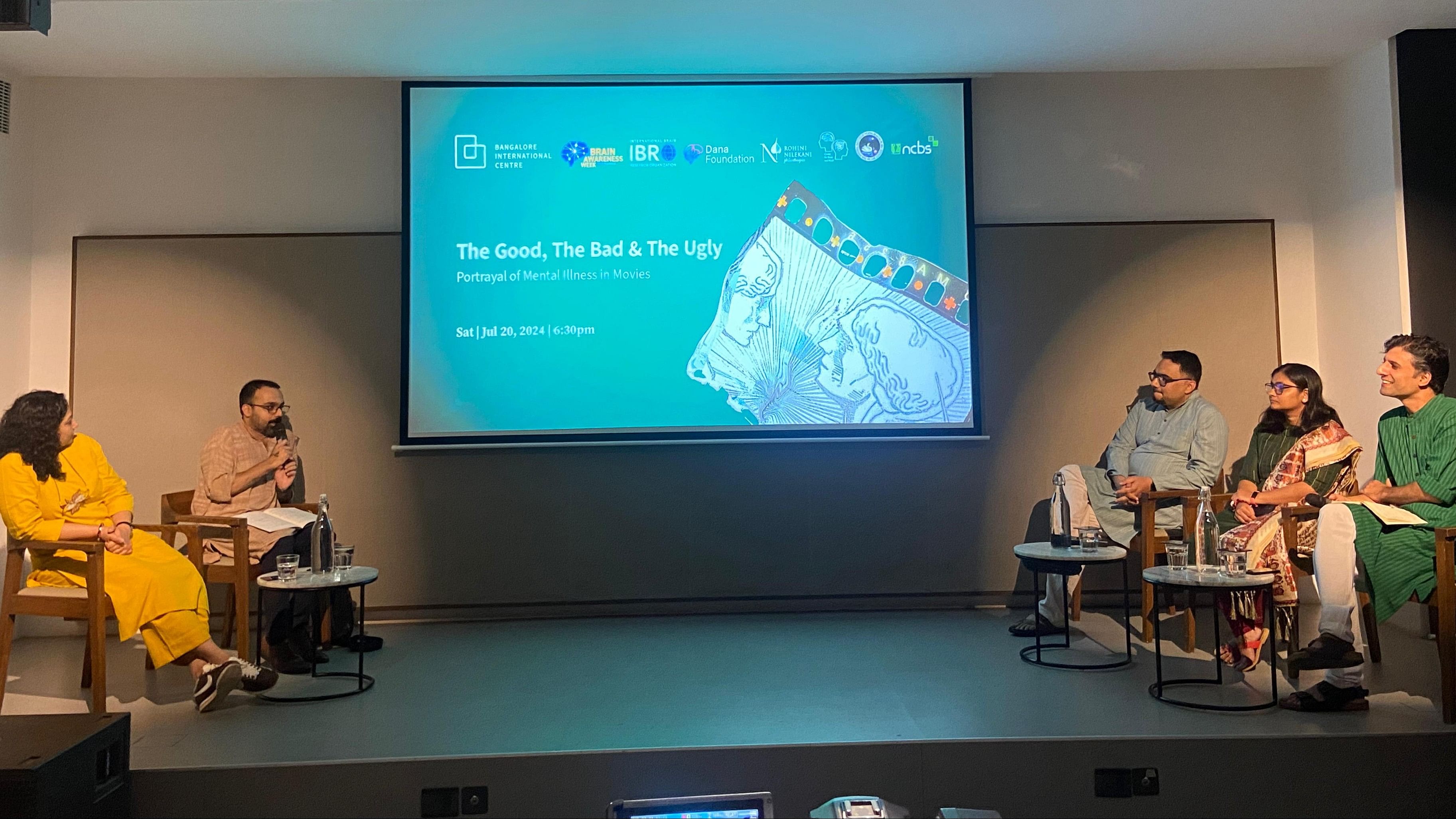
Experts discuss cinema’s impact on mental health at an event in Nimhans in Bengaluru on Saturday.
Credit: Special Arrangement
Bengaluru: Normalcy—the idea of what is normal and what is not—is largely constructed, and cinema plays a dominant role in internalising it, said Suhas Satish, Assistant Professor of Psychiatry at the National Institute of Mental Health and Neurosciences (Nimhans) on Saturday.
He spoke at a panel discussion titled “The Good, the Bad, and the Ugly,” examining the impact of cinematic portrayals on public perception and stigma surrounding mental health issues in Indian cinema. The discussion was organized by the Rohini Nilekani Centre for Brain and Mind – National Centre for Biological Sciences (NCBS) in collaboration with Nimhans at the Bangalore International Centre (BIC) in Bengaluru.
“A substantial amount of time is invested in understanding the clusters of symptoms of patients for accurate diagnosis, which is often misrepresented in films,” he said, adding that techniques used in the pre-psychotropic era, such as shock treatment and hypnosis, are still depicted in Indian cinema. He asserted that such representations should be avoided in contemporary cinema.
Responding to this, Basundhara Ghosh, a blogger and founder of GangsofCinepur, said that popular Indian cinema should not be the primary source of knowledge on mental health, as it could further stigmatize issues related to mental health.
During the event, clippings from popular Bollywood and South Indian movies were screened, and the panel interacted with the audience about their perceptions of the portrayal of mental illness in cinema.
Filmmaker Vrinda Samartha remarked that the continued depiction of mental illness as violent and dark with no affinity to reality in contemporary cinema indicates a lack of awareness and research among filmmakers. Another Bengaluru-based filmmaker, Suneel Raghavendra, added that filmmakers must be more updated with mental health sciences for accurate representations of psychiatric conditions in cinema. The panel was moderated by filmmaker and educator, Anmol Tikoo.